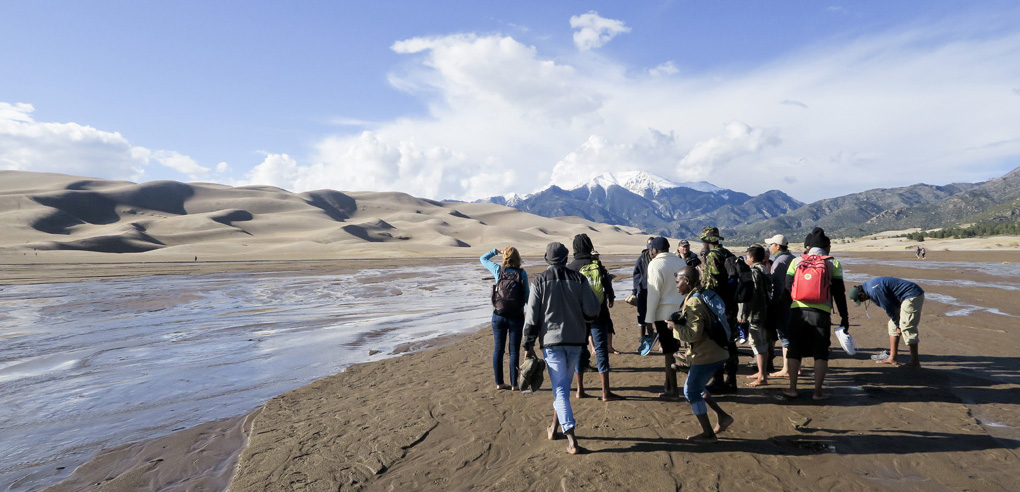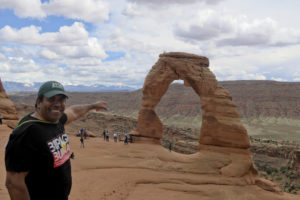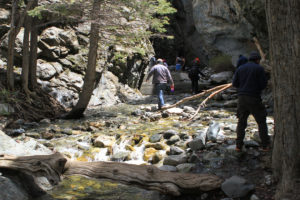
Jim Barborak has seemingly endless energy. As co-director of the Center for Protected Area Management at Colorado State University, he helps run one of the longest-standing programs in the country. The CSU program is known around the world for providing teaching, training and technical assistance for rangers and staff in the world’s parks and protected natural areas.
Barborak moderated a panel at the recent World Ranger Congress, which was held in Estes Park, Colorado. He was not only responsible for introducing the speakers and providing an overview of the topic — roles of agencies in the U.S. and around the world in visitor and resource protection — but he also translated the session into Spanish as participants spoke.
He and Ryan Finchum, also a co-director for CPAM, travel to Brazil, Mexico, Cuba, Colombia, Peru and Panama, among other countries. They help government agencies and nongovernmental organizations with things like developing trails or building a successful visitor’s center.
The role of conservation agencies is changing rapidly, Barborak said during the panel session.
“Conservation budgets are declining or stable, and responsibilities are increasing,” he said. “The number of hectares of land we have to protect is going up. How do we conserve biodiversity, and provide good visitor services?”
Partners, volunteers important
In the U.S. and internationally, conservationists are relying much more on partnerships and alliances, Barborak said.
Ralph Swain, regional wilderness program manager with the U.S. Forest Service, oversees 47 areas in the five states of the Rocky Mountain region. He said he couldn’t do his job without volunteer groups that help with education and other duties.
CSU + 62 park rangers from 26 countries
CSU’s Center for Protected Area Management provided unique training courses for park rangers outside the U.S. before and after the recent International Ranger Federation’s 8th World Ranger Congress. More than 60 rangers from 26 countries studied up on resource management, law enforcement, search and rescue, tourism, and interpretation. The rangers also visited national parks in Colorado and Utah. All of the participants received full scholarships, thanks to CSU-led partnerships with the U.S. Agency for International Development, World Wildlife Fund Education for Nature Program, U.S. Department of the Interior, U.S. National Park Service and Thin Green Line Foundation.
“We have ‘friends of’ groups all over Colorado, Wyoming and South Dakota,” Swain said. “These are citizens who live within the community, and they want to see [the park] taken care of. They volunteer their time to work with us.”
When he’s on patrol, Swain said a volunteer accompanies him and helps clear trails, conduct research, talk with visitors and clean up trash.

Andy Wright, acting park manager at Fall Creek Falls State Park in Tennessee, supervises rangers and search and rescue personnel, among other staff. He is considered law enforcement, and attended the police academy as part of his training to be a ranger.
Wright said he and his team recently apprehended a man who had turned a rock spire into his own personal shrine with religious statues and other trinkets. The man was charged with vandalism.
Echoing what Swain had described, Wright said nearly every park in Tennessee has a “friends” group. “They buy water for the rangers for major events, buy equipment like computers, and help us buy land,” he said.
Arian Hampel, park ranger with the City of Boulder, said that he works closely with the International Mountain Bicycling Association and the rock climbing community on seasonal closures.
“We have a variety of cliff-nesting raptors, peregrine falcons, prairie falcons and golden eagles,” he explained. “We work with the climbing community to try to close down certain climbing areas for the shortest time possible.”
Law enforcement a common theme
Hampel said law enforcement is increasingly becoming a big part of his job. In late May, Hampel said his colleagues were involved in a shoot-out in Boulder. One suspect was shot by police officers and later died from his wounds. “It’s becoming more and more common, unfortunately,” Hampel said.
Marchilio Ack, who works in the Bladen Nature Reserve in Belize, said major challenges for him are poaching, people mining for gold and other illegal activities. He and his team are working with a national security agency to try to combat poaching.
“We don’t have [many] visitors,” Ack said. “We have a lot of international universities doing scientific research on vegetation and wildlife. In the U.S., in the parks we visited, there are thousands or even millions of visitors, something I can’t even imagine.”

Ack was one of 62 rangers who took part in a unique training program led by CPAM (see sidebar) as part of the World Ranger Congress.
Poaching remains a challenge
Combatting poaching was a major concern mentioned by all of the international rangers who spoke at the session.
“Here in the United States, the main goal of the ranger is to keep the visitor or tourist safe or happy,” Masrizal Saraan of the Orangutan Information Centre in Indonesia noted. “Threats are low in America.”
Saraan said that rangers struggle to conduct awareness activities in protected areas in Indonesia.
Nachamada Geoffrey, project manager at the Wildlife Conservation Society in Nigeria, agreed. He said that he appreciated seeing environmental education in U.S. parks, and he hopes to implement something similar one day. “But one of the big constraints is manpower and resources,” he said.
Geoffrey said that threats in his park are very different than the U.S., “so our strategies have to be different. Poachers come to our park and they kill our rangers, so our rangers have to be armed. We have to be vigilant and stay in the park 24/7, patrolling.”
In Nigeria, some of the people who live near national parks have inherited poaching as a trade, due to a lack of jobs. “All the [surrounding] communities depend on the park for their livelihoods,” he said. “The people are poor, not educated. They will only give us support if they get direct incentives.”
Geoffrey said he appreciated hearing about rangers’ jobs in other countries. “It’s been really good to share experiences and meet other people who have the same or more problems than I do,” he said. “It gives me some relief.”
While the differences between the U.S. and other countries seemed stark, Barborak reminded the audience that the world’s first national park, Yellowstone, was once managed by the military. “If you read the stories of the first game wardens, we started out with the U.S. Army running national parks,” he said.
“Things do change and evolve,” Barborak said. “Hopefully rangers in other countries can make the transition from a very enforcement-based approach to education.”
The Center for Protected Area Management is in the Department of Human Dimensions of Natural Resources, Warner College of Natural Resources.